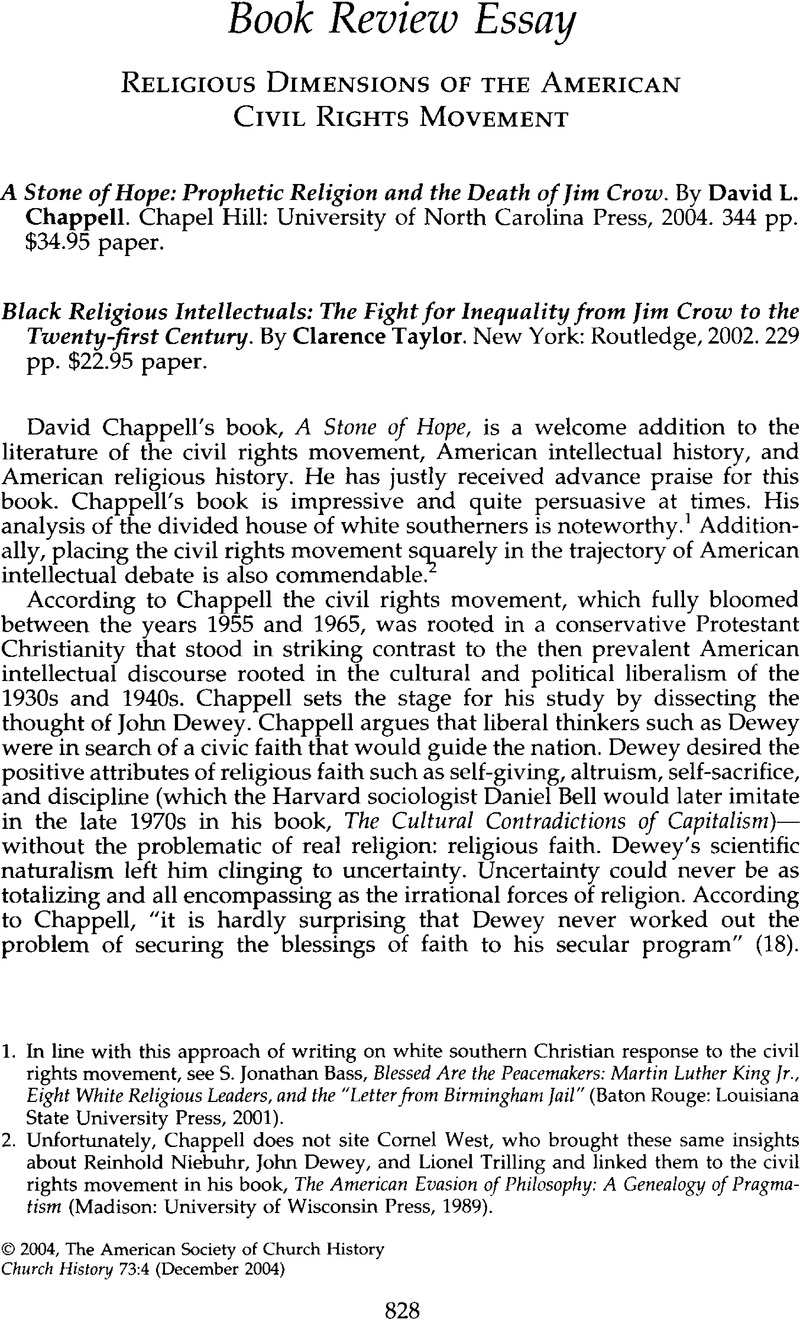No CrossRef data available.
Published online by Cambridge University Press: 28 July 2009

1. In line with this approach of writing on white southern Christian response to the civil rights movement, see Bass, S. Jonathan, Blessed Are the Peacemakers: Martin Luther King Jr., Eight White Religious Leaders, and the “Letter from Birmingham Jail” (Baton Rouge: Louisiana State University Press, 2001).Google Scholar
2. Unfortunately, Chappell does not site Cornel West, who brought these same insights about Reinhold, Niebuhr, John, Dewey, and Lionel Trilling and linked them to the civil rights movement in his book, The American Evasion of Philosophy: A Genealogy of Pragmatism (Madison: University of Wisconsin Press, 1989).Google Scholar
3. Richard, Fox, Reinhold Niebuhr: A Biography (New York: Harper and Row, 1987), 4Google Scholar; See King's, “An Autobiography of Religious Development,” in The Papers of Martin Luther King, Jr.: Volume I (Berkeley: University of California Press, 1992), 362.Google Scholar
4. See Paul, Harvey'sRedeeming the South: Religious Cultures and Racial Identities Among Southern Baptists 1865–1925 (Chapel Hill: University of North Carolina Press, 1997)Google Scholar for a discussion of the regional and theological identity connecting black and white Baptists in the south.
5. Chappell rightly critiques Lewis, Baldwin'sA Balm in Gilead: The Cultural Roots of Martin Luther King, Jr. (Minneapolis, Mimi.: Fortress, 1991)Google Scholar for his wide assertion about a generalized “black church tradition.”
6. For a critique on the limitation of Niebuhr's influence, see Eugene, McCarraher, Christian Critics: Religion and the Modern Impasse in American Thought (Ithaca, N.Y.: Cornell University Press, 2000).Google Scholar
7. See Sudhardan, Kapur, Raising a Prophet: The African-American Encounter with Gandhi (Boston: Beacon, 1992).Google Scholar
8. David Levering, Lewis, King: A Critical Biography (New York: Praeger, 1970), 23.Google Scholar
9. Washington, Joseph R. Jr. asserted the following: “The condition of the American Negro has forced him to be individualistic even in matters of worship. As a result, there have been creative individuals within the context of worship. Negroes have produced great preachers, but few intellectual leaders. The gap between spiritual depth and social action has never been quite bridged,” in Black Religion: The Negro and Christianity in the United States (Boston: Beacon, 1966), 104Google Scholar. A number of scholars have accepted this assertion without question and, therefore, reduplicate it in their scholarship.
10. He cites Harold Cruse's The Crisis of the Negro Intellectual; Kevin Gaines, Uplifting the Race: Black Leadership, Politics, and Culture in the Twentieth Century; William Wright's Black Intellectuals, Black Cognition, and a Black Aesthetic.